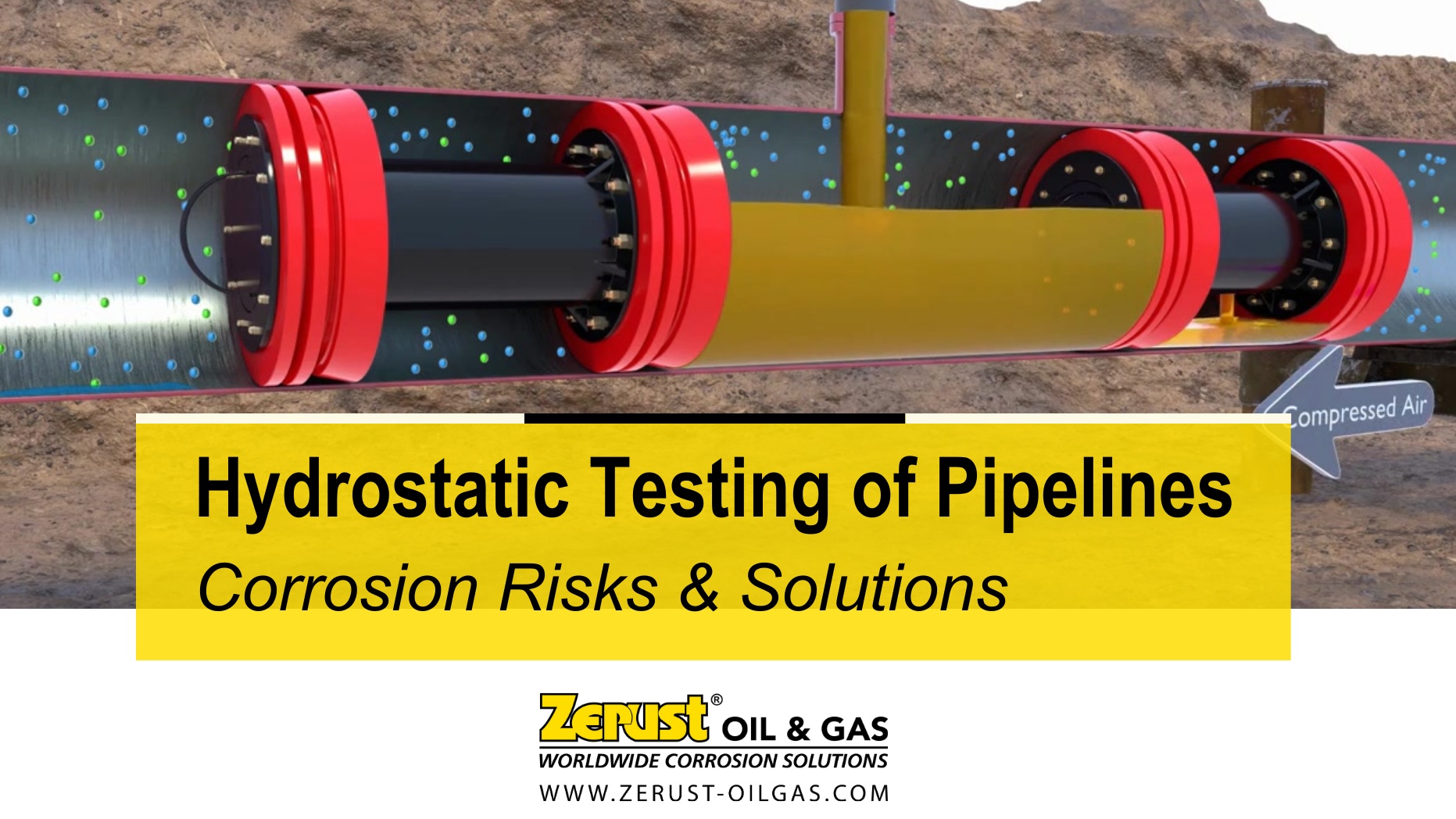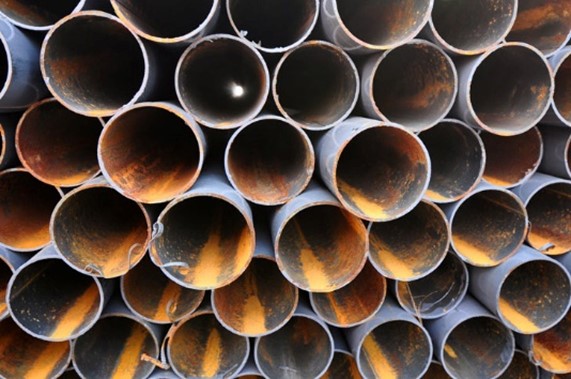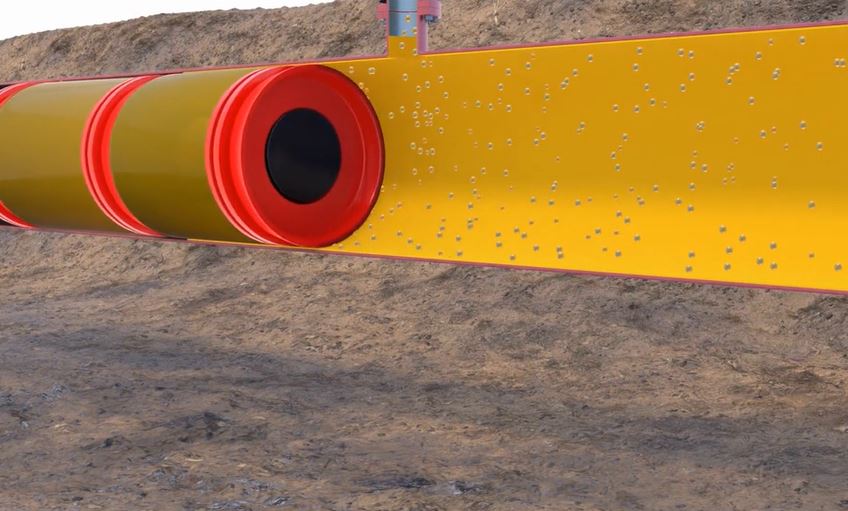Hydrostatic Testing of Pipelines - Corrosion Risks & Solutions

Hydrostatic Testing of pipelines - Corrosion risks & solutions
What is Hydrostatic Testing?

Hydrostatic testing assesses the strength and integrity of a pipeline/vessel/boiler/gas cylinder by filling it with water and pressurizing it to a level that exceeds its normal operating pressures (typically 150%) for a particular amount of time. During the test, any leaks, cracks, or deformities in the tested structures will cause water to escape, indicating a failure. This type of testing is commonly utilized to ensure the safety and reliability of structures that are designed to hold products under pressure.
Corrosion Risks during and after Hydrostatic Testing of Pipelines
Corrosion can be a potential risk during and after hydrostatic testing. Flash Corrosion or biological/bacterial materials can be introduced into the structure depending upon the source of water or previously introduced containments. As noted, the source of water is a major factor. Groundwater, tank water, and purified water all have unique properties and potential contaminants.
Corrosion Solutions for Protection of Pipelines Post-Hydrotest

A properly formulated corrosion inhibitor can counter these possible contaminants. Dead, low spots, valves, and flanges can collect residual moisture durint the Hydrotest process generally at the six o’clock position of the structure. Using corrosion inhibitors during hydrostatic testing can help reduce this risk by treating and neutralizing the contaminants during the test even in these remote recesses of the structure. In Zerust’s chemical makeup, Soluble Corrosion Inhibitors (SCI‘s) in the hydrotest fluids will neutralize contaminants on the steel surface upon contact.
Vapor Corrosion Inhibitors will evolve from the hydrotest fluids to provide continuing protection to the entire internal areas of the structure on the surface areas and vapor spaces. The VCI’s neutralize moisture and prevents oxygen molecules from bonding with the steel structure. The surface area of the pipe is in contact with the inhibitor solution which then sheds to the 6 o’clock position when the hydrotest water is drained and removed.
Zerust Corrosion Solutions
Zerust understands that there is no cookie-cutter application and/or solution for hydrotesting or treating hydrostatic test water and structures. Our goal is to meet all discharge permit requirements for water quality, volume, and flow rate through our chemistry.
For more information about Zerust's Pipeline Preservation solutions, and solutions for corrosion prevention during hydrotesting, please visit our webpage below.
Related Content
Preservation Options for New Pipelines, between Hydrotesting and Commissioning

